Ants: The Good, the Bad and the Ugly
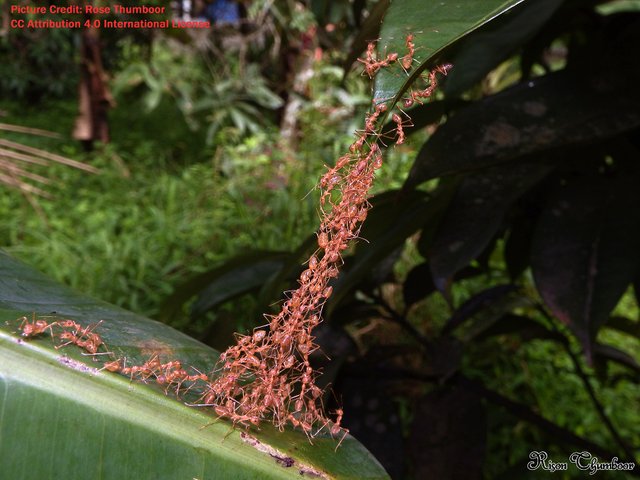
The weaver ants in the picture above are demonstrating the high degree of cooperation that gives ants an edge over many competing species. Weaver ants are found in Australia and Southeast Asia. Here they are building a chain out of their own bodies so other ants can travel along the living bridge. Weavers are known to be skillful nest builders and fierce nest protectors. Ants--not just weavers--are highly eusocial. They dedicate themselves, even sacrifice themselves, to the survival of the young and the colony. If you think this is exotic, consider that humans have also been described as eusocial, though the degree of altruism (sacrificing oneself for the group) evident in an ant colony is harder to find in human society.
Nest-Building, Using Larval "Silk"
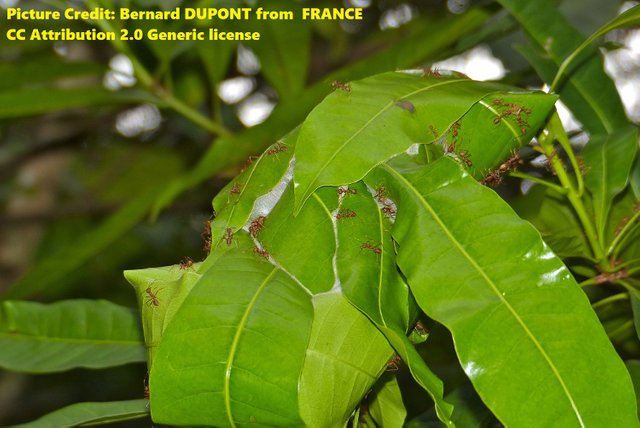%20credit%20Bernard%20DUPONT%20from%20FRANCE%202.0%20generic.jpg)
In nest-building, weavers show not only cooperation, but ingenuity. They nest on leaves that they "weave" together. One of their tools is the larva from the nest. Tiny drops of glue-like liquid, called silk, are expressed from the larva along the edge of a leaf. The leaf is pressed together and becomes housing for the brood. The silk is also used to weave a delicate shelter. Check out this YouTube video to see nest-building in action.
In a blog I wrote a few weeks ago, about ants in hospitals, I described how hard it is to staunch an ant "invasion". It is precisely because ants are so highly organized, so exquisitely social, that they are successful. This success both benefits and harms humans. Ants are essential to life on earth as we know it.

Some Ant Species Protect Plants
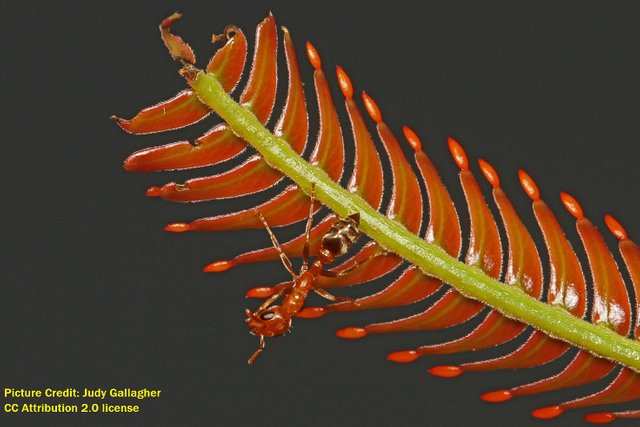
Here an acacia ant (scientific name Pseudomyrmex) is protecting an acacia tree. The tree and the ant have a mutualistic relationship. The lives of the two are so intertwined, that it is believed one cannot exist without the other. The acacia tree provides food and shelter for the ant throughout its life cycle, and the ant protects the tree from harm. Not only does the ant attack (with stingers) herbivores, but it also keeps the ground around the base of the tree free from other plants.
In the picture below, elephants in South Africa are eating an Acacia tree that was not protected by ants. The elephants give wide berth to trees that are defended by the tiny warriors. If you watch this YouTube video by Ron Jissink, Ants Protecting Acacia Tree From Elephant, you can see clearly how elephants avoid trees protected by the acacia ant.
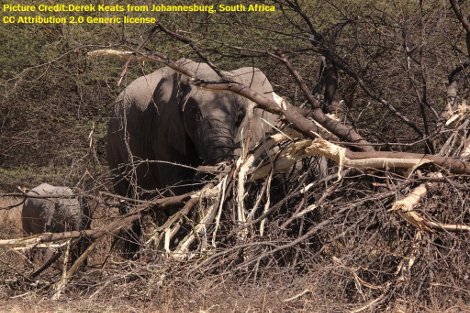.jpg)
And Some Ant Species Harm Plants
There are some species of ant that actually kill plants in order to protect their nests. Two species that do this are the Allegheny mound ant (Formica exsectoides) and the lemon ant (Myrmelachista schumanni).
Allegheny Mound Ant
The mound ant lives in the North American Atlantic coastal area and clears vegetation around its mound to a perimeter of 40-50 feet. The nest needs sun in order for the young to grow, so anything that threatens sun exposure, by throwing shade, for example, is killed. The ant bites the vegetation and injects formic acid into the opening, as much acid as is necessary to kill the intruding plant.
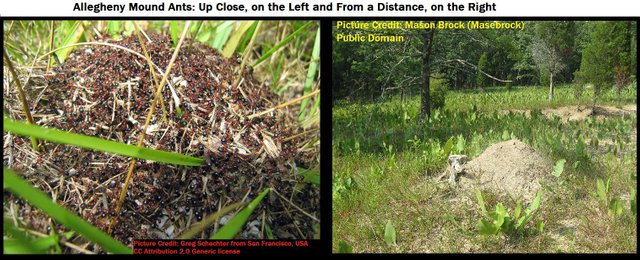

Lemon Ant
Devil's Garden
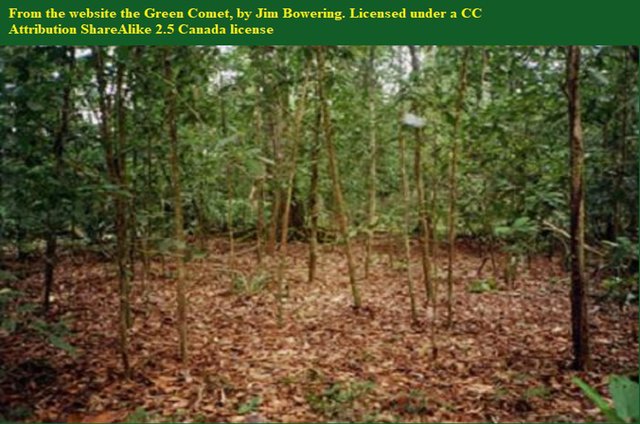
The lemon ant creates what are known as 'devil's gardens' in the Amazonian rainforest. These areas are distinct because the ant kills any vegetation that impedes on its habitat, which is the Duroia hirsuta tree. The ant bites the leaves and branches of the impinging vegetation and injects formic acid that smells like lemons (hence the name lemon ant). The picture below shows a cutting from a Doroia hirsuta and this video shows the ants in their habitat as they defend their territory.
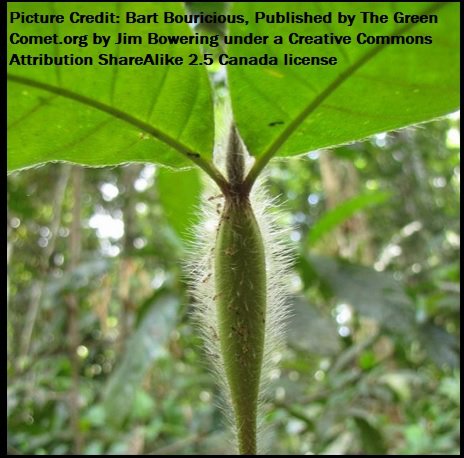
Ants Have Been Called Ecological Engineers
In 2017, a group of researchers published an article in the Journal of Animal Ecology on ant activity in a Borneo rainforest. According the journal article, 52% percent of all the debris that settles on the floor of the rainforest is carried away and redistributed by ants. If the ants are removed, other species do pitch in, but do not completely compensate for the absence of this industrious arthropod. Debris piles up and rots.
The photo below shows a rainforest reserve in Sabah, Malaysia. The ant study cited above was conducted in Sabah, so the territory the ants were clearing probably looked a lot like this. It is described as a dipterocarp forest.
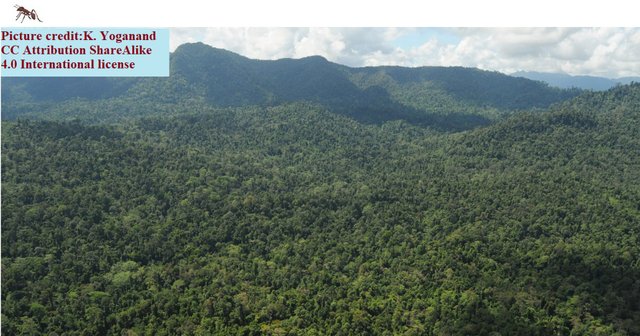
The Earth Needs Ants
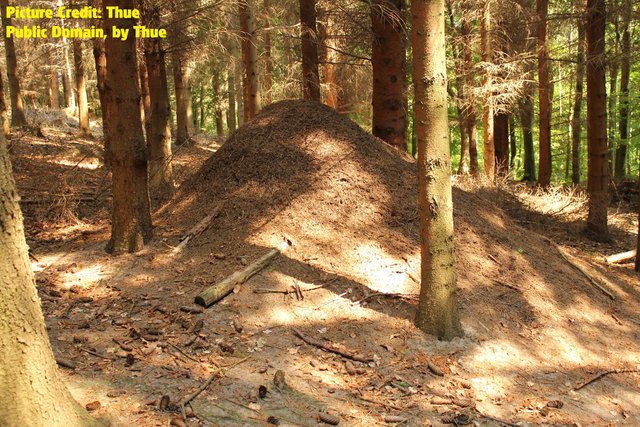
This huge mound was made by red wood ants, which also go by the name rufa. These ants are considered a keystone species in some forest areas of Europe and Asia. Not only are rufa regarded as valuable assets to nature, but it seems they are also effective at controlling tick populations, although the mechanism by which this happens is not understood.
Ants Create Compost
Most of us know that earthworms are used in compost heaps, but some of the best composters on earth are ants. The quality of ant compost depends upon a number of variables that may affect the ants. Diet, for example. Herbivorous ants create better compost than omnivorous ants.
The composting effect achieved by the ants is a result of the accumulation of foraged material and also from ant poop.
Besides composting, ant mounds have another beneficial effect on soil. The nests are inclined to be pH-neutral, and it seems that this tends to moderate the acidity of soil in surrounding areas. Most plants grow best in pH-neutral soil.
Ants as Pollinators
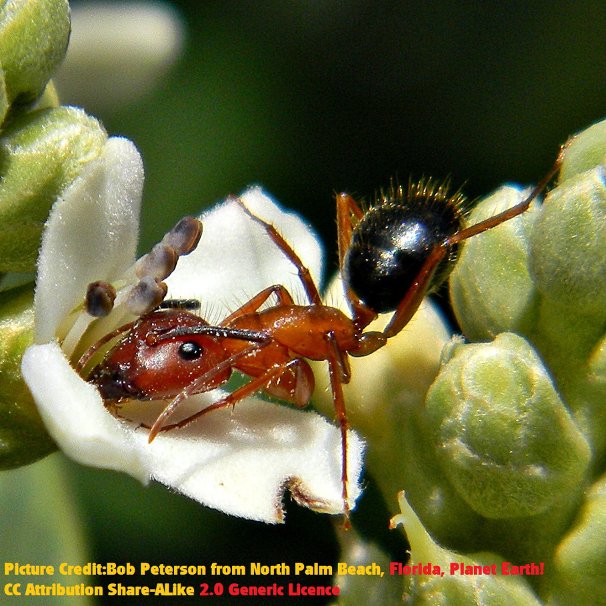%20Bob%20Peterson%20from%20North%20Palm%20Beach,%20Florida,%20Planet%20Earth!%202.0%20generic.jpg)
While we are generally accustomed to thinking of bees and butterflies as pollinators, ants are often overlooked in this crucial role. The picture above shows a Florida carpenter ant (Camponotus floridanus) sipping nectar from a mangrove blossom. As the ant does this, pollen sticks to its body. When the carpenter ant moves on to another mangrove plant, so will the pollen. There are some researchers, though, who believe that ants may transport pollen, but are not effective at fertilizing plants.
Some Ants May Aid in the Spread of Invasive Plant Species

Though fire ants (Myrmica rubra) are pollinators, it seems that in this role they help to spread invasive plant species. In a report issued by the University of Toronto, it is suggested that a fire ant invasion carries a double whammy. Not only do the ants themselves take over large swaths of land and displace native ant species, but the fire ants carry with them invasive plant seeds and these plants drive out native species.
When one invasive species, such as the fire ant, facilitates the spread of other invasive species, the phenomenon is called an "invasional meltdown." This is what ecologists at the University of Toronto suggested might be happening in southern Ontario. In a controlled experiment they showed that an invasive plant species, greater celandine, was preferentially spread by fire ants over multiple native, competing plant species. This invasive plant has already spread pretty widely across eastern Canada.
Greater Celandine
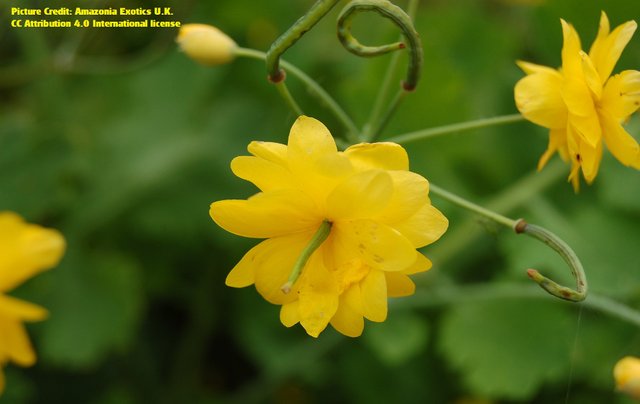

We've seen, so far, that ants can build chains with their bodies by joining together in common purpose. They can drive plants and other species away from territories they covet. They can aerate the soil and create huge compost heaps. They work together so completely that some entomologists have characterized their colonies as a superorganisms. It is exactly their industry, motivation and unified aggression that has led the IUCN (International Union for Conservation of Nature) to include some ant species on the list of 100 most invasive species. A popular name for this invasive class of ants is "tramp ant". They are tramps because they hitched a ride at some point on some human conveyance and were transported inadvertently to their new homes.
Tramp Ant in Israel: Little Fire Ant (Wasmannia auropunctata)
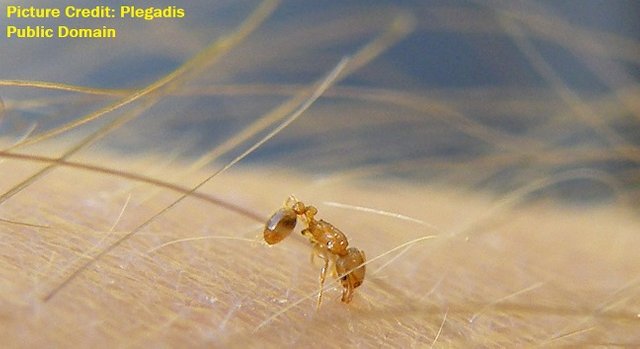
This little fellow is doing something fire ants seem to be doing regularly in Israel these days. It's biting a human. These ants don't have a particular preference for humans. They'll bite pets and anything else that moves. They're wreaking havoc, not only in Israel, but in other parts of the world. Once they have established themselves, the ants are extremely difficult to eradicate, or even control. Part of the reason they are so successful is because all the ants are "kin" and therefore satellite colonies cooperate with each other to eliminate competing species.
An article published in Haaretz this year described the invasion. According to this article, all the fire ants in Israel came from one queen, inadvertently imported in the 1990s. A scientist at Tel Aviv University explained that the fire ants live in harmony precisely because they are related.
A recent report indicated that 280 Israeli communities are infested, and there are fears the ants will soon cross the Sea of Galilee. This is expected because the ants are known to form rafts to facilitate their passage across water.
The chief scientist of Israel's Nature and Parks Authority, Dr. Yehoshua Shkedy, offers a grim assessment of the fire ant invasion: He doesn't feel that the tools exist to deal with the problem.
Hawaii: Yellow Crazy Ant (Anoplolepis gracilipes)
Yellow Crazy Ants Swarming a Red-tailed Tropical Bird on Johnston Atoll, Hawaii
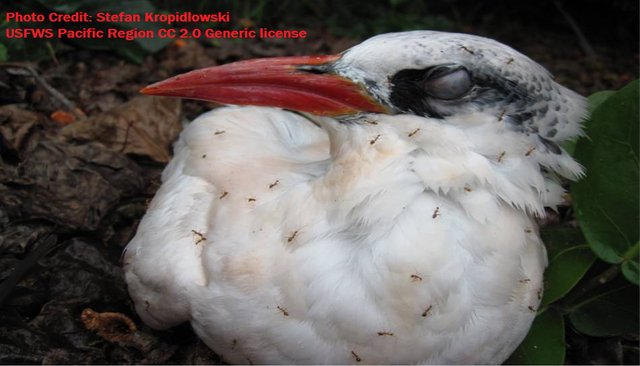
Hawaii has a distinct ecological community, because of its island character. Several invasive ant species are imperiling Hawaii's unique wildlife, and are making life miserable for many of its human residents. Here I'll look at a relative success story in Hawaii: The elimination (maybe) of the yellow crazy ant from the Johnston Atoll. The ant was taking a devastating toll on bird species on the island, because the birds were ground nesters. Johnston Atoll is rat free, so has always been safe for ground-nesting birds.

Brown Boobies, a Ground-Nesting Bird, at Johnston Atoll, Hawaii

Yellow crazy ants changed that. They attacked birds. Even when adult birds survived the attacks, their hatchlings did not. The Hawaii Department of Agriculture set out to completely eliminate this ant species. It seems the effort may have been successful, but a five-year window has to pass before the atoll will be considered free of the yellow crazy ant.
This ant is not the only one that has invaded Hawaii, but it is the one where an effort to eradicate, or at least control, has met with some success.
Europe: The Fire-Starting Ant(Lasius neglectus)
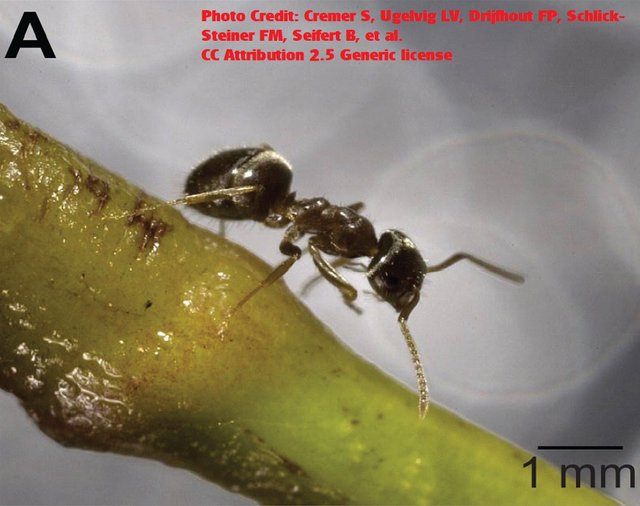
I couldn't decide whether to feature this ant or the Argentine ant, because both have established super colonies in Europe. The fire-starting ant is making inroads in the UK, along the Mediterranean coast and in Kiev, Ukraine. And it does start fires, so I decided to go with this ant.
The ant is called fire-starting because of its fondness for electricity. It nests in electrical circuitry and munches on electrical equipment. As is true of other aggressive ants, it also drives out native ant species. The fire-starting ant is a garden ant, and it does not bite. However, it is inundating public squares, private yards and private homes. The ant's immunity to conventional insecticides confounds attempts to control its growth.
One irritating trait of the ant is aphid farming, which enables aphids to propagate on trees. This leads to problems in at least two areas: the aphids weaken trees, especially young trees, and the abundance of honeydew produced by the aphids leads to a sticky mess around the tree.
Since the ants form super-colonies, the expansion across Europe has been rather relentless. Some entomologists believe (hope?) that because the species is infected with a certain type of fungus (Laboulbenia formicarum) that spreads easily among fire-starting ants and not others, the ants may suffer colony collapse. Remember, all these ants are related, so they share a susceptibility. The source of their strength and harmony may be the very thing that brings about their destruction.
In Sum
The reason I wrote this blog is to emphasize that there is no simple way to regard ants. Ants are essential to life on earth, as we know it. We have to co-exist with this multitudinous species in a way that protects us and allows them to carry on with their very important work.
The tiny ant accent pictures in the blog were crafted using a Paint 3D program.


Some Resources Used in Writing This Blog
Project Noah: Hantik, Weaver Ants
http://www.projectnoah.org/spottings/17885356
The Nature Education Knowledge Project: An Introduction to Eusociality
https://www.nature.com/scitable/knowledge/library/an-introduction-to-eusociality-15788128
Smithsonian.com: Edward O. Wilson’s New Take on Human Nature
https://www.smithsonianmag.com/science-nature/edward-o-wilsons-new-take-on-human-nature-160810520/
National Geographic.com: Sisterhood of Weavers
https://www.nationalgeographic.com/magazine/2011/05/weaver-ants/
Weaver Ants Nest Building Behavior: YouTube, Prithvi Media Creations
https://www.youtube.com/watch?vOueg8bWjV3c
NECSI: Mutualistic Relationships
http://www.necsi.edu/projects/evolution/co-evolution/mutualistic/co-evolution_mutualistic.html
BIOL202@UNBC: Invertebrate Zoology
https://blogs.unbc.ca/biol202/2015/05/01/pseudomyrmex-ferruginea-the-ideal-tenant/
Rob Jissink: Ants Protecting Acacia Trees From Elephants (YouTube)
https://www.youtube.com/watch?vIkTs0Q3JUls
MSU Extension: Mound Ants
https://www.canr.msu.edu/news/mound_ants
World Atlas: What is so Interesting About the Behavior of Lemon Ants?
https://www.worldatlas.com/articles/what-is-so-interesting-about-the-behavior-of-lemon-ants.html
Marcio Dias: As Formigas do Jardim do Diabo - Myrmelachista schumanni (YouTube)
https://www.youtube.com/watch?vHSyMJQ70Mt8
British Ecological Society: Ants Are the Major Agents of Resource Removal From Tropical Rainforests
https://besjournals.onlinelibrary.wiley.com/doi/full/10.1111/1365-2656.12728
In Defense of Plants: Dipterocarp Forests
http://www.indefenseofplants.com/blog/2017/12/5/dipterocarps
Plos Ecology Community: Ants Are Essential Ecosystem Engineers
https://blogs.plos.org/ecology/2017/09/25/ants-are-essential-ecosystem-engineers/
Ecosystems: The Role of Wood Ants (Formica rufa group) in Carbon and Nutrient Dynamics of a Boreal Norway Spruce Forest Ecosystem
https://link.springer.com/article/10.1007/s10021-012-9608-1
Biomedcentral.com, BugBitten: Ant-tick antics: red wood ants could help to reduce tick numbers in forests
https://blogs.biomedcentral.com/bugbitten/2018/03/20/ant-tick-antics-red-wood-ants-help-reduce-tick-numbers-forests/
J. of Animal Ecology: The effects of ant nests on soil fertility and plant performance: a meta-analysis.
https://www.ncbi.nlm.nih.gov/pubmed/28369906
American Forests: Ants and Trees, A Lifelong Relationship
https://www.americanforests.org/magazine/article/ants-and-trees-a-lifelong-relationship/
University of Vermont Extension Department of Plant and Soil Science: pH for the Garden
http://pss.uvm.edu/ppp/pubs/oh34.htm
BugGuide: Species Camponotus floridanus - Florida Carpenter Ant
https://bugguide.net/node/view/183926
PeerJ: Ants contribute to pollination but not to reproduction in a rare calcareous grassland forb
https://www.ncbi.nlm.nih.gov/pmc/articles/PMC5822835/
U. Toronto: European fire ant impacts forest ecosystems by helping alien plants spread
https://news.artsci.utoronto.ca/all-news/fire-ant-ecosystems/
The Star.com: European fire ant helping spread of invasive plant
https://www.thestar.com/news/world/2014/12/23/european_fire_ant_helping_spread_of_invasive_plant.html
Live Science: They've Got Personality: Ant 'Superorganisms' Have Unique Temperaments
https://www.livescience.com/61114-ant-superorganism-personality.html
International Union for Conservation of Nature
https://www.iucn.org/
Invasive Species Specialist Group: View 100 of the World's Worst Invasive Alien Species
http://www.issg.org/worst100_species.html
Australian Gov't Dep't of Environment and Energy: Tramp Ants
http://www.environment.gov.au/biodiversity/invasive-species/publications/factsheet-tramp-ants
Haaretz: Fire Ants and Fury: These Little Pests Made Aliyah, and They're Wreaking Havoc on Israel
https://www.haaretz.com/israel-news/.premium-these-little-pests-made-aliyah-and-they-re-wreaking-havoc-on-israel-1.5807719
Johnston Atoll: Brown Booby
https://www.fws.gov/refuge/johnston_atoll/wildlife_and_habitat/brown_booby.html
American Bird Conservancy: Invasive Ants in Hawai'i: Small Species, Big Problems
https://abcbirds.org/battling-invasive-ants-in-hawaii/
Autonomous University of Barcelona: Lasius Neglectus
http://www.creaf.uab.es/xeg/lasius/Ingles/interactions.htm
Arstechnica: Meet the worst ants in the world
https://arstechnica.com/science/2016/08/meet-the-worst-ants-in-the-world/
AntWiki: Supercolonies
http://www.antwiki.org/wiki/Supercolonies
The Telegraph: Fire-starting 'super ant' that is drawn to electrics is spreading across the UK, experts warn
https://www.telegraph.co.uk/news/2016/07/27/fire-starting-super-ant-is-spreading-across-the-uk-experts-warn/
franceinfo: Invasion de fourmis à Meusnes (Loir-et-Cher)
https://france3-regions.francetvinfo.fr/centre-val-de-loire/val-loire/loir-cher/invasion-fourmis-meusnes-loir-cher-777707.html
Entomological Review: The beginning of the invasion of Lasius neglectus (Hymenoptera, Formicidae) in Kiev (Ukraine)
https://link.springer.com/article/10.1134/S001387381708005X
Click Energy: Electricity-Addicted Ants: Making Your Bad Habit Look Good
https://www.clickenergy.com.au/news-blog/electricity-addicted-ants
Arbortek Trees: Honeydew and You -- How to Treat Tree Aphids
http://www.arbortektrees.com/honeydew-and-you-how-to-treat-tree-aphids/
Leibnitz Information Center for Science and Technology University Library: Rapid increase of the parasitic fungus Laboulbenia formicarum in supercolonies of the invasive garden ant Lasius neglectus
https://www.tib.eu/en/search/id/springer%3Adoi~10.1007%252Fs10530-015-0917-0/Rapid-increase-of-the-parasitic-fungus-Laboulbenia/
Awesome article. One of my Bio professors in college was convinced that ants would take over the world one day. It later turned out that he was just one million ants in a trench coat.
You didn't mention one of my favorite ant behaviors: Some species cultivate fungus for food. They're tiny insect farmers and surprisingly successful at it.
What a delight to have you stop by and mention this aspect of ant behavior. I finished the blog with the idea of writing an ant book. There must be so many out there, but this is such a rich topic. I think your Bio professor (million ants in a trench coat😂) may have been right!
Edit: I'm looking at my brief answer to you. Perhaps you can't tell by my answer that so much of what I read about ants led me to read more. I realized as I went along that one of my greatest challenges was going to be deciding what to leave out and what to leave in. Most people really don't want to know very much about ants, I think.
Yes, there are farmers--and self-exploding ants. Then there are the different types of colony organization. One area that interested me in particular was the mutualistic relationship between gut bacteria and some ants. But if I wrote an article about that I might have only one reader (you 🙂).
It is possible I'm a frustrated biologist.
Two!
I am so tempted. I discovered an interesting thread when I wrote the blog about ants in hospitals, but I have controlled myself. Two readers might be enough to go forward....:)
Ants are fascinating so I think you’d get a lot of readers no matter how much you write about them. I bet you could fill an entire post about the ant gut microbiome :)
Yes, I could! :))
😄
Great post. Resteemed.
Wow! Thank you!
Wow! Another fantastic article! I've never thought about ants as much as when I've read your last two pieces.
Ants are amazing creatures that can be both a blessing to their natural systems or a blight to those they've invaded. You've me thinking now, over the millions of years of propagating, pollinating and invading, how much of our world as we know it is due to ants?
From the article through the American Bird Conservancy link that you referenced:
Finding a workable balance between ants and humans seems to require more effort and finesse than a high wire motorcycle act.
I was surprised to learn that ants farm aphids. Yet another way these fascinating social creatures have a similarity to humans (farming other species).
Will you be doing another piece on ants? (Please say yes, no pressure. 😉)
(Brisby pictures herself happily wading in water when suddenly she comes across a raft of ants! 😱 Come to think of it, Raft of Ants sounds like a movie I'd watch.)
😬 😁
Raft of Ants--that may be one movie title that hasn't been used yet!
Thank you for enjoying the article. The nerd in me gets exercise on Steemit. There are many more interesting ant facts. There's one particular line of investigation, about plant-eating ants, that I find fascinating. After writing a few more stories I may be ready to delve back into the universe of science. Hard to write because I have to double and triple check facts and references, so as not to make a mistake.
Thanks for your thoughtful comment. Always a pleasure to find here.
Thank you for this rich contribution and insight into the many ant species and their activities.
When I once went on holiday on Mallorca, we were well advised not to leave any open food lying around in our holiday home. After we hadn't even thought about it for the first day and came back to the house, there were many ant roads on the ground that ran up the kitchen counter to collect the crumbs. We quickly agreed that we didn't like to share the room with the ants and locked everything edible and swept the floor clean when we left. Afterwards not a single ant was to be seen any more, although they were of course nevertheless somewhere outside of our view. Their presence didn't bother me much. In such an environment the ants educate one to cleanliness, so much was certain.
The usefulness and harmfulness of ants depends, it seems, on how much useful and harmful things they find for themselves. When the biosphere is in balance and its natural enemies and friends are present, no ant is a problem. So I wonder which of their natural enemies are not present in the territories they conquered. Which in turn raises the question of whose food an environment does not provide. The less the food chain is maintained, the less organisms stand between us and the ants. Did your research provide any information about the natural enemies that kept the ant population in check in a relevant way? And here it becomes clear once again that the gross intervention and exposure of predators by humans can only create a new imbalance if it is not based on a permacultural thought that not only has the animals in view, but also the plants.
It seems to be of the greatest difficulty to artificially create such a balance and this is probably the human tragedy that we as creators of our environment have dared to venture so far out that we are no longer accustomed to sharing our habitat with animals and plants, since if nature gets too close to us, we have to reckon with all possible diseases and dangers. But of course, nothing that man does makes him really safe. And where a danger is eliminated, a new one is created by man himself on himself.
Your Youtube example, which shows how ants defend their habitat against elephants, shows once again that basically any species - whether mammal, cold-blooded animal, insect or plant - can become dangerous.
For me this raises the question whether humans, like all other living creatures, simply try to dominate their habitat and behave like ants and elephants. Which at the same time leaves us wondering: Which living being actually keeps humans in check? We also know the creepy answer: the smallest of all: viruses and bacteria.
Well then: I have been walking on earth for almost fifty years. How can I claim that my death or that of many others due to an infectious disease does not contribute to the natural balance? This may sound macabre, but this way of seeing it may not be the worst. Which has absolutely nothing to do with the fact that I think it would be good if my loved ones or myself had to suffer. Intervention is necessary and meaningful, but assault is less so.
Hi Erika,
I had an off day so haven't been active on Steemit until now. I'm going to start my response to your comment by saying this article was prompted partly by your reaction to my previous ant blog. You were right to point out then that we should not dismiss ants as pests...that they have a place on earth as we do. And so I looked into it and tried to give a balanced argument.
I'm glad you raise the point today about natural enemies of ants...one is actually indicated in this article: the fungus that is afflicting fire-starting ants is a natural enemy and it seems to be picking on them alone. There are of course ant eaters and other 'enemies' of ants. I had make decisions about what to cover and what not to cover--it's not easy. I tried to make this interesting and at the same time informative. The best I hoped for happened with you: more questions. I think whenever we leave a piece curious about something we've read, that's a good thing.
The note that you end on....where do we fit in the natural balance? Is always a good question. I think we probably are wisest to respect life and acknowledge modestly how much we don't understand about its delicate balance.
Thanks so much for reading my long article about ants :)
I wonder why they gave it this name; it basically means 'fake ant'.
I was gonna say that, the reason ants are so eusocial and cooperative is because many share more than 50% of their genes, which means inputting that into a game theory scenario will give you radically different results from most species we know: less antagonistic and more cooperative.
Ants are overall one of the most fascinating creatures on earth. Which is why I'm gonna binge on the linked videos now...
Thank you for that --- sent me looking for a 'fake ant' explanation. It seems they are very wasp-like. As a matter of fact, all descriptions of them include that phrase. Read this bit...fascinating that one variety of Pseudomyrmex differs from some ant species in that the ants don't leave pheromone trails when they establish a new nest but "adult workers carry other aged workers, queens, and males to the new nest site".
Always a bright spot when I see you on one of blogs. Thanks for reading and commenting.
I know my baldness casts a reflection. No need to point it out. 😔
😄😁
Hi @agmoore!
Your post was upvoted by Utopian.io in cooperation with @steemstem - supporting knowledge, innovation and technological advancement on the Steem Blockchain.
Contribute to Open Source with utopian.io
Learn how to contribute on our website and join the new open source economy.
Want to chat? Join the Utopian Community on Discord https://discord.gg/h52nFrV
Thank you so much!!
This post has been voted on by the SteemSTEM curation team and voting trail in collaboration with @utopian-io and @curie.
If you appreciate the work we are doing then consider voting all three projects for witness by selecting stem.witness, utopian-io and curie!
For additional information please join us on the SteemSTEM discord and to get to know the rest of the community!
Thank you....all three. I have chosen you as witnesses. It's great fun writing these posts, but getting your upvote really puts the cherry on the cake :)
This was an interesting and informative post. I like how the weaver ants build a "living bridge." And I was shocked to see that humongous mound made by red wood ants. I wonder how long it took them to build that. And those poor birds in Hawaii. Now I have the heebie-jeebies. Scratching and making sure no ants are crawling on me while I send you this !tip.
Congratulations on your well deserved upvotes!
Thank you so much! And thanks for the !tip!! I love learning about nature, insects, stuff that might seem boring. I wonder sometimes if anyone is interested, but I keep writing. Grateful for the upvotes.
Yeah, me too, the heebie-jeebies. After a while, I got disgusted looking at ants. Never felt that way about them before.
Have a wonderful night. Look forward to your nature posts.
My pleasure! : ) Nature never ceases to amaze me and I write that a lot in my posts. I get so excited every time I find a new insect and love to do the research to find out all I can about it. Except for spiders. Those I could do without. Shivers!
You have a great night too! : )
Congrats on the Curie upvote! This post deserved it as it is so informative and interesting. So great to learn new things about ants!
Thank you! Not everyone wants to read about ants, but I did want to write about them. Grateful for your endorsement :)